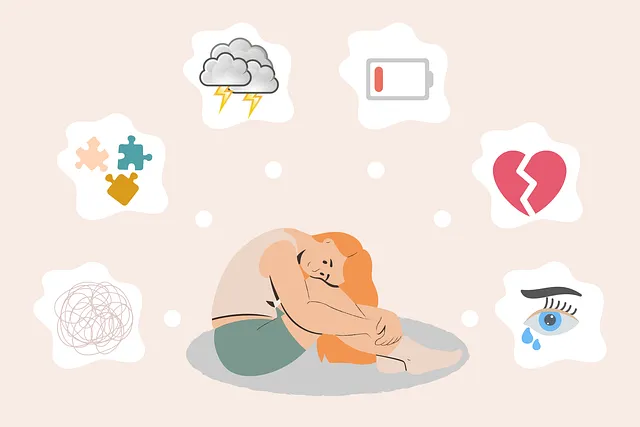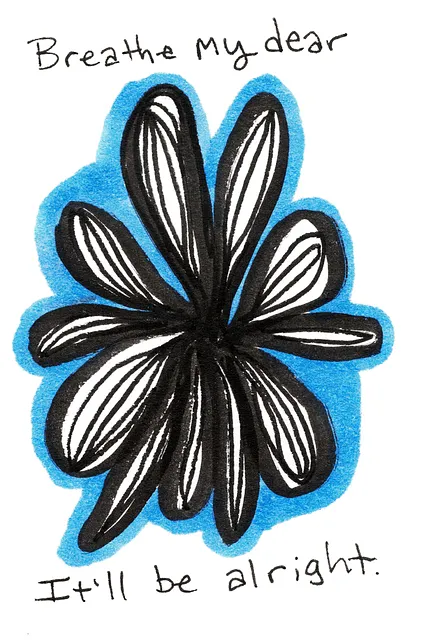Kaiser Permanente in Centennial introduces the RFM framework to enhance mental well-being by building resilience through stress management workshops, mindfulness training, and outdoor activities. These initiatives, integrated with community outreach, aim to create accessible resources for individuals to develop emotional regulation strategies, reduce burnout risk, and foster a culture of mental health awareness within the Centennial community.
“Resilience is a cornerstone of community well-being, especially in the face of growing mental health challenges. This article explores how organizations like Kaiser Permanente can leverage RFM (Resilience Factor Model) to strengthen their approach to mental health support. We provide a comprehensive guide on implementing resilience exercises tailored to Kaiser Permanente’s needs, focusing on the Centennial initiative for mental health coverage. By understanding RFM and its impact, we aim to empower communities to build resilience and foster healthier environments.”
- Understanding RFM and Its Role in Resilience Building
- Implementing Resilience Exercises: A Step-by-Step Guide for Kaiser Permanente
- The Impact of Mental Health Coverage (Centennial Focus) on Community Resilience
Understanding RFM and Its Role in Resilience Building

Resilience is a vital asset for navigating life’s challenges, and RFM (Resources, Fortitudes, and Mastery) is a powerful framework to foster this quality. This concept, often utilized in mental health programs like those offered by Kaiser Permanente in Centennial, focuses on enhancing individuals’ ability to cope with stress and adversity. By identifying and strengthening their internal resources, fortifying protective factors, and cultivating coping skills, people can develop emotional regulation strategies that support their overall well-being.
The RFM approach encourages participants to explore and leverage their personal resources, such as social connections, problem-solving abilities, and a sense of purpose. It also emphasizes building fortitudes, including resilience, optimistic thinking, and self-efficacy, which enable individuals to persevere through difficult situations. Additionally, mastering challenging tasks and learning from experiences contributes to the development of effective coping skills, ensuring better emotional healing processes and improved mental health coverage for all involved.
Implementing Resilience Exercises: A Step-by-Step Guide for Kaiser Permanente

Implementing Resilience Exercises for Kaiser Permanente’s members is a strategic move towards enhancing mental health coverage and well-being in the Centennial region. The process begins with identifying specific resilience-building activities tailored to the unique needs of their community. This might include stress management workshops, mindfulness training, or outdoor adventures designed to foster connection and promote emotional agility.
Once these exercises are selected, Kaiser Permanente can develop a step-by-step guide for effective implementation. This could involve creating structured programs within their existing Community Outreach Programs, ensuring accessibility and inclusivity. By providing clear instructions, promoting peer support, and offering regular sessions, they can encourage participants to embrace resilience as a lifelong practice. The goal is to empower individuals with tools to navigate challenges, ultimately reducing the risk of burnout and fostering a culture of Mental Health Awareness.
The Impact of Mental Health Coverage (Centennial Focus) on Community Resilience

The mental health landscape is evolving, with increasing recognition of its pivotal role in community resilience. Organizations like Kaiser Permanente are at the forefront of this shift, promoting comprehensive mental wellness initiatives as a Centennial focus. By integrating robust mental health coverage into their services, they empower individuals and communities to build resilience against life’s challenges. This approach extends beyond individual well-being; it fosters a collective sense of strength and adaptability that is essential for navigating unforeseen circumstances.
The implementation of effective community outreach programs, underpinned by thorough risk assessments for mental health professionals, further solidifies this impact. Kaiser Permanente’s commitment to these strategies underscores their dedication to enhancing the resilience of communities they serve. This proactive approach ensures that mental health resources are accessible and tailored to meet diverse needs, ultimately contributing to more resilient and thriving communities.
In conclusion, integrating RFM and resilience-building exercises, as demonstrated by Kaiser Permanente’s successful implementation guide, plays a pivotal role in fostering community strength. The example set by organizations like Kaiser Permanente underscores the impact of comprehensive mental health coverage, particularly under the Centennial focus, on enhancing overall community resilience. By prioritizing these strategies, we can create more adaptable and resilient societies, ensuring better preparation for and recovery from challenges and disasters.






